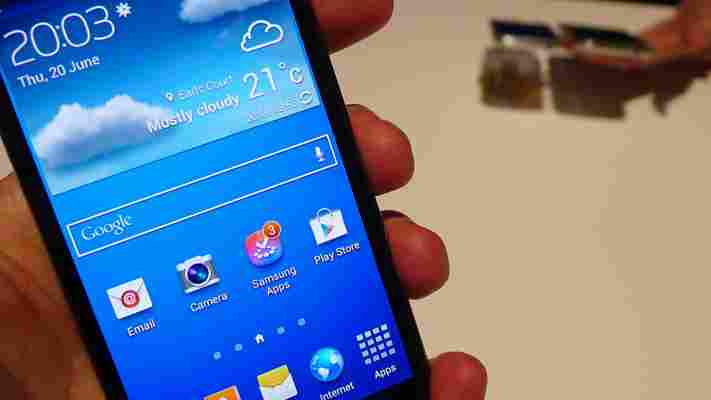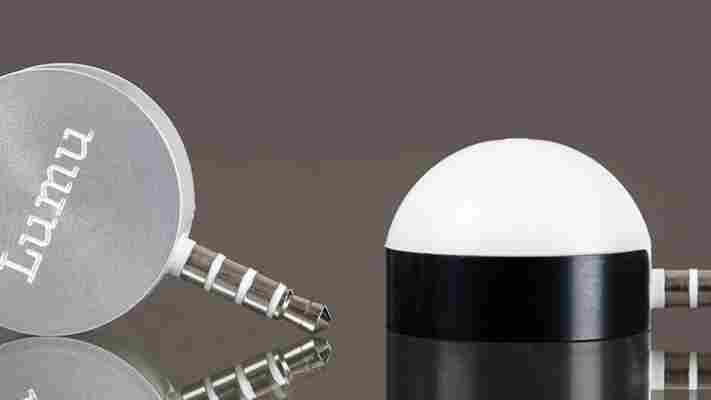Samsung lifted the lid on the Galaxy S4 Mini a while ago, revealing a mid-range Android smartphone with a smaller 4.3-inch qHD Super AMOLED display.

It’s a step-down from the original Galaxy S4 – which has already sold over 10 million units globally to date – offering a 1.7 GHz dual-core processor, 1.5GB of RAM and 8GB of internal memory. The handset is powered by a 1900 mAh battery, which is serviceable but far below the 2600 mAh version fitted in its older brother.
The smaller display and less powerful process should ensure that the Galaxy S4 Mini comes in at a lower price than the original Galaxy S4, opening it up to a much wider group of users on more affordable contracts.
The Galaxy S4 Mini was on show at Samsung’s ‘Premiere 2013’ event in London today – where it also showed off a number of new ATIV devices – so TNW took the chance to go hands-on and serve up some initial impressions.
You can now add credit to your Sony Entertainment Network wallet using PayPal on the PlayStation 3
If you’re a PayPal devotee, you’ll be pleased to hear that as of today you can begin adding credit to your Sony Entertainment Network wallet using the digital payment service on a PlayStation 3.

It’s been possible to transfer money between PayPal and Sony’s cross-platform digital marketplace since January , but only from the Web. The option was nice, although a little long-winded for gamers who just wanted to download Journey or the next episode of The Walking Dead .
Now, as you’re checking out from the cart on the PlayStation Store, you’ll see a PayPal option every time you hit the ‘Add Funds’ option. Credit transfers range between $5 and $150, which is more than enough for a handful of digital titles.
➤ PayPal Support Added to PS3 PlayStation Store (Engadget)
Lumu is a tiny, elegant light meter for the iPhone aimed at analog and digital photographers alike
Lumu is a tiny, portable light meter that plugs into the iPhone’s headphone jack to help budding photographers get the perfect exposure and figure out the perfect shutter speed, aperture and ISO setting to select on their analog or digital camera.

The company launched a Kickstarter campaign earlier today to fund the product, which is roughly the size of a coin – albeit with a dome on top that makes it twice as thick as the current generation iPhone (or thereabouts). It’s incredibly elegant and can even be used with a standard iPhone bumper, given that there’s a 2.2mm gap between the headphone jack and the start of the meter.
So why use Lumu? Well, the device records incident light, or the brightness of light that reaches the subject before it’s reflected. This is an accurate form of light metering for measuring the light coming towards an object, but might not give the most accurate representation for the exposure as a whole (as you might require certain areas to be ligher or darker than normal). The alternative is reflective light meters – those used in the camera itself, which measures the brightness of the light bouncing off the subject. This can occasionally result in misreadings.
For shutter bugs in the know, the measuring range for the Lumu is 0.15 ro 250,000 lux (EV -4 to 20) for ambient incident light, or ISO 100. It also uses a cardioid-type hemispherical diffuser – the half-sphere found on top – and draws power from the audio jack. So there’s no batteries to worry about, which is also a massive bonus for when you’re out in the field.
Lumu also has an app to accompany the portable light meter. It’s pretty gorgeous to look at – more so than Luxi , another incident light meter that launched on Kickstarter earlier this year and subsequently smashed its funding target.
There’s just a few horizontal rings for the shutter speed, aperture and ISO setting, displayed in clear, crisp text with either a light or dark color scheme. It’s also possible to save settings and sync them to the cloud, which is incredibly useful for those who regularly shoot in the same location – an indoor studio, for example, or a local concert hall.
Lumu is beautiful in its simplicity and the company has produced some suitably polished transportation options to ensure that photographers are always carrying it around. The Lumubag is a small leather pouch that mimics the traditional bags used with analog SLR cameras, or the Lumuneck is available for those who want it a little closer to home.
The Lumu is a far more elegant solution than Luxi, but you’ll pay for the privilege. Luxi started its backer tiers at $14 for a basic light meter, while Lumu has ramped that up to $79 for an early bird pack.
Regardless, the company has 25 days to hit its funding goal of $20,000. Given that it’s already passed the $7,500, we’re going to go out on a limb and say it’ll soar past that milestone no problem.
